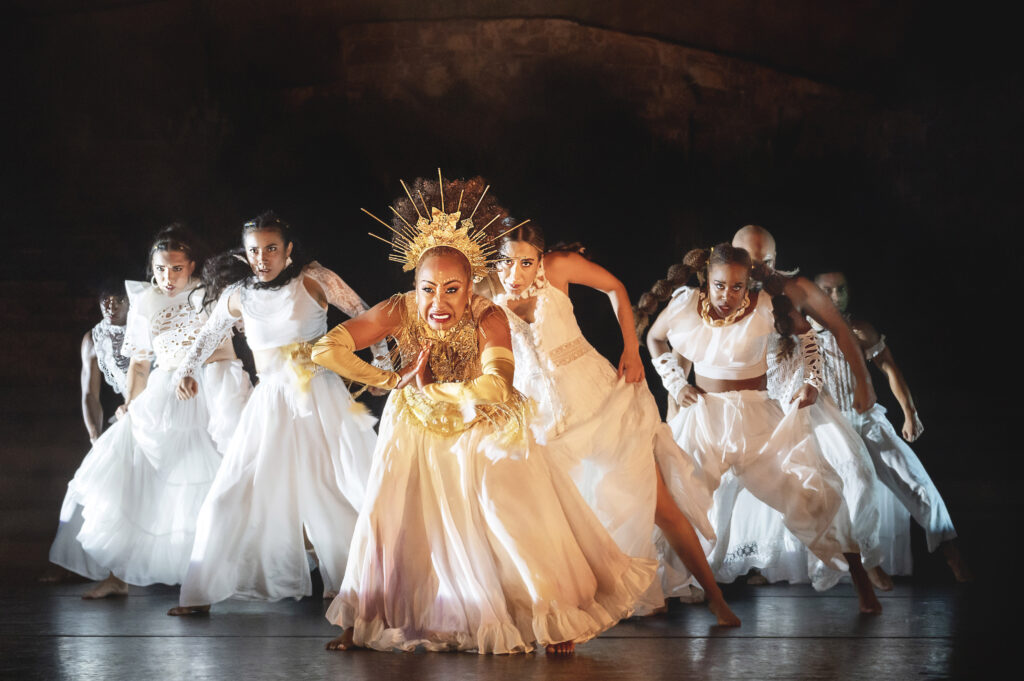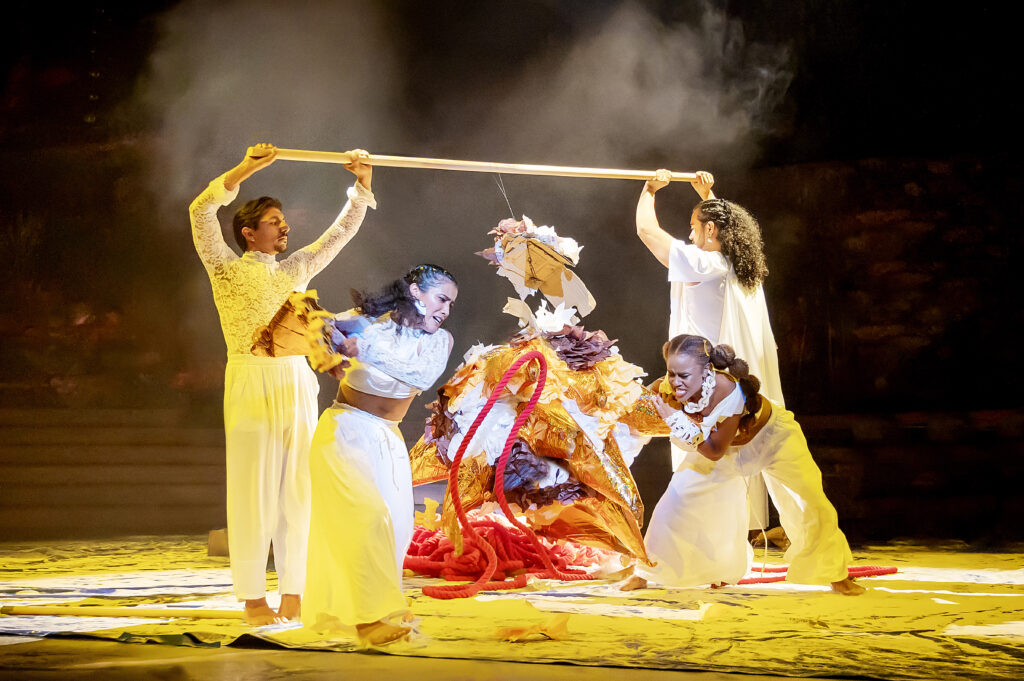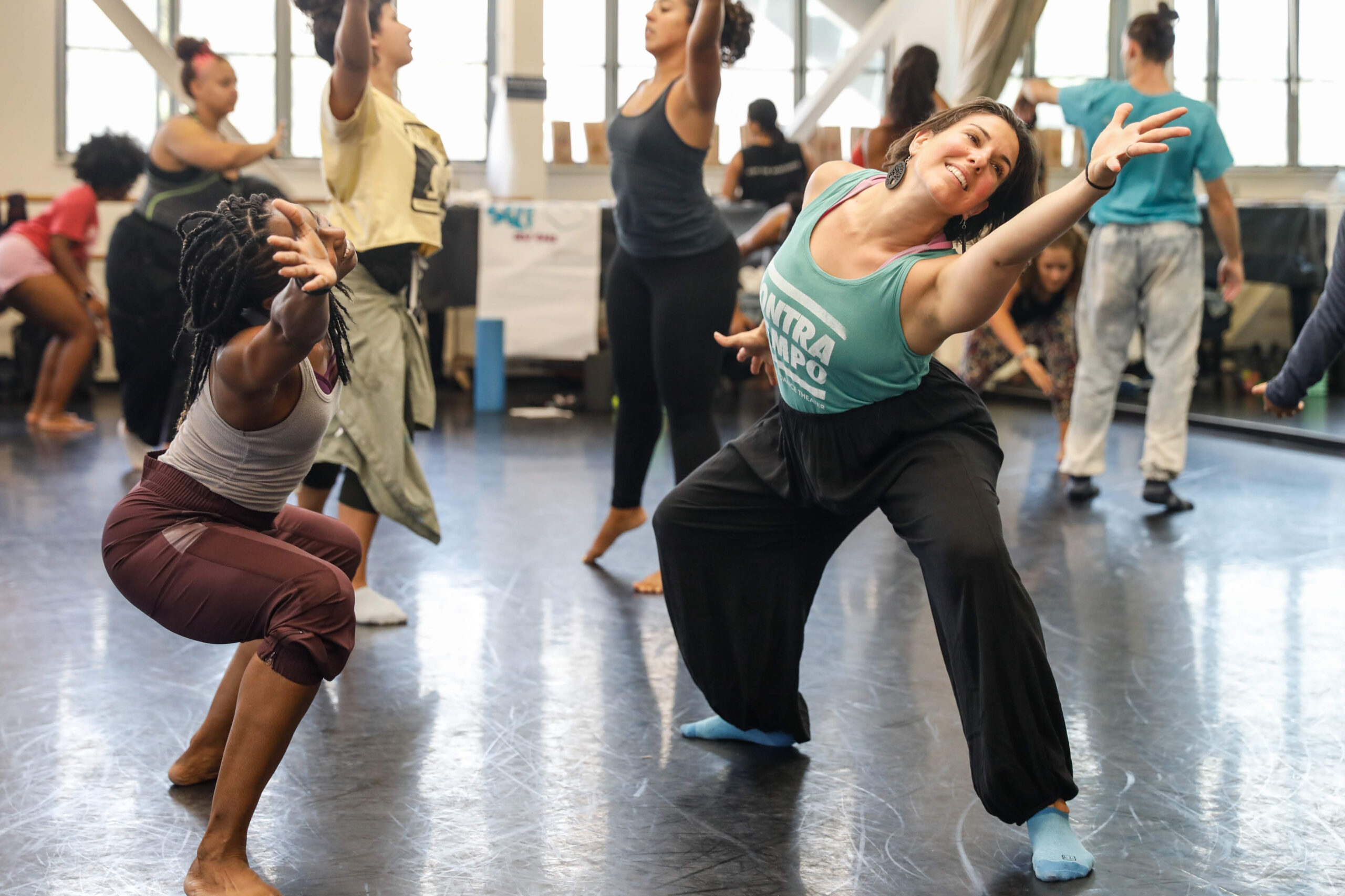Ana María Alvarez Redefines the Dance Program at UC San Diego
Ana María Alvarez didn’t always imagine herself ending up back on campus. “I’ve had a love–hate relationship with the academy,” says Alvarez, the founder of CONTRA-TIEMPO Activist Dance Theater who joined the University of California San Diego’s Theatre and Dance Department as a tenured faculty member in late 2022.
It’s true that her journey into dance was intertwined with higher education: She double-majored in dance and politics at Oberlin College and earned her MFA in choreography at UCLA. Her thesis work looked at salsa as a way to express social resistance in the debate around immigration. The Cuban American daughter of two labor union organizers, Alvarez had also seen her mother transition into academia, which made it feel familiar and accessible.
It hasn’t always felt inviting and inclusive, however. “I was constantly fighting to legitimize the ways that I danced, and the ways that I moved, and the things that I was interested in studying,” she says. When it came to exploring social dance practices outside of ballet and modern and how she wanted to move through the world as an artist, Alvarez says, “I found myself having to really push back and advocate and argue with people that it mattered.”
After she graduated, Alvarez focused on art and activism the way she envisioned it. After some early adjunct-teaching gigs in dance departments, she shifted her focus to cultivating her own work, accepting occasional guest-choreographer and visiting-artist opportunities instead. “It felt like the field wasn’t ready yet,” she says.
Years later—after carving her own path, building a thriving company, and receiving recognition for her work—she found the job opening at UCSD. “It literally was describing who I am as an artist,” she says. “When I got the job description, I was like, ‘I think they’re ready.’ ”
She’s so glad they were. “I’ve always had deep, deep love for learning, deep love for teaching, deep love for inquiry and curiosity,” she says. “So much of my own artmaking practice is about asking questions and grappling with the world, and there is no better place to be doing that than inside of a university.”
Making Way for New Stories
Alvarez’s parents instilled in her a drive to make the world “a better, more loving, and just place,” she says, and she wanted to do it through movement. “I have a deep belief that choreography is community organizing,” she explains. “You’re imagining and creating worlds, and you’re redefining the ways in which we think about the world and think about ourselves within the world.”
That, in an oversimplified nutshell, is the philosophy she brought with her to UCSD at a moment when the “Dance” part of the Theatre and Dance Department in particular was in transition. “I fell in love with the blank canvas that I saw,” she says, along with the students and colleagues she met. It gave her the freedom to start building something new.
In her first year, she taught courses on the politics of partnering, introduction to dancemaking, and what she calls “ancestral technologies,” exploring the wisdom of one’s ancestors embedded in social dance practices. She hired nearly a dozen new lecturers to teach classes in forms as diverse as traditional hula, flamenco, capoeira, Filipino folk dance, West African dance, Afro-Cuban dance, tap, jazz, contact improvisation, and more.
She also did a lot of listening, and heard a common refrain about people being isolated in their own silos. She established a weekly “Connection Jam” where anyone and everyone is welcome. “We’re gonna get down, we’re gonna dance, we’re gonna sweat, and we’re gonna move together,” Alvarez says. “We’re gonna practice joy.”
Another new tradition has all the technique classes gather at the end of the quarter to share what they’ve been doing with their peers. It was so popular the first quarter they did it, in a small black-box theater, that they moved to the Epstein Family Amphitheater the next time around.
“Ana María’s presence in the department is wholly inspiring and palpably positive, and she has forged a strong sense of community,” says faculty member Jade Power-Sotomayor, explaining that Alvarez led the way in cleaning out the dance office and putting up new posters all over the building, “literally making way for new bodies and new stories.”
Connecting Campus and Company
The new role at UCSD came with a serious commute and a major balancing act. Alvarez still lives in Los Angeles with her family and continues to work as an artist with CONTRA-TIEMPO and beyond. It’s only possible to juggle, she says, because CONTRA-TIEMPO horizontalized its leadership structure—with Alvarez as artistic director running the group with three other directors. She splits her weeks between campus and company and plans intensive projects for academic breaks.
There are no silos here, either. “Because I have this access and connection to a professional dance company that is making work, that is touring, that is running summer programs, that is doing regular local gigs,” she says, “my students also have access to that.” Early on, Alvarez invited company members to San Diego to lead a Connection Jam so her students could meet and engage with the pros. In recent months, Alvarez has been working with a group of students to explore and deepen the physical language of ¡azúcar!, her latest piece for CONTRA-TIEMPO, to culminate in a performance with other faculty choreography at Winter Works on March 15 and 16. When CONTRA-TIEMPO comes to UCSD to perform ¡azúcar! in April, those students will become the community cast that shares the stage with them.


“I’m just so excited to be anywhere she is,” says Norma Ovalle, who graduated last year but is participating in the process as an alum volunteer. “I didn’t necessarily grow up seeing that there’s a possibility for somebody like me to pursue this,” she says. But that changed when she met Alvarez. She’s now working toward an associate’s degree and a future in dance.
Coming up a few years behind her, Vrisika Chauhan, a junior who has a background in Indian classical dance and also didn’t always feel like she belonged, decided to declare dance as a second major. “My perspective on what dance is has truly shifted,” she says, thanks to Alvarez. “She has helped so many students, including myself, feel seen.”




